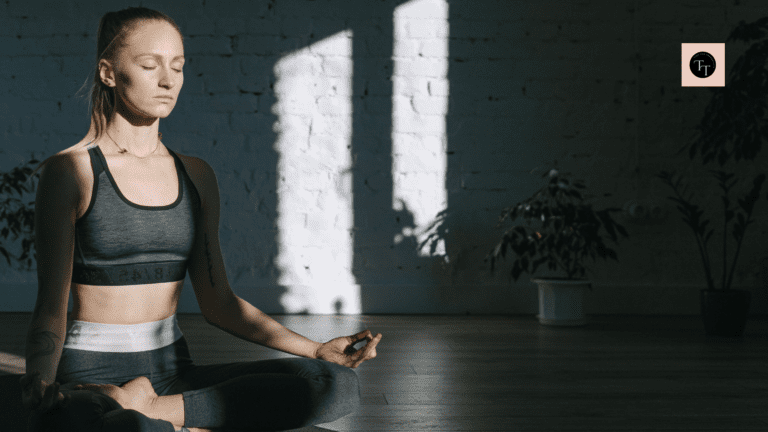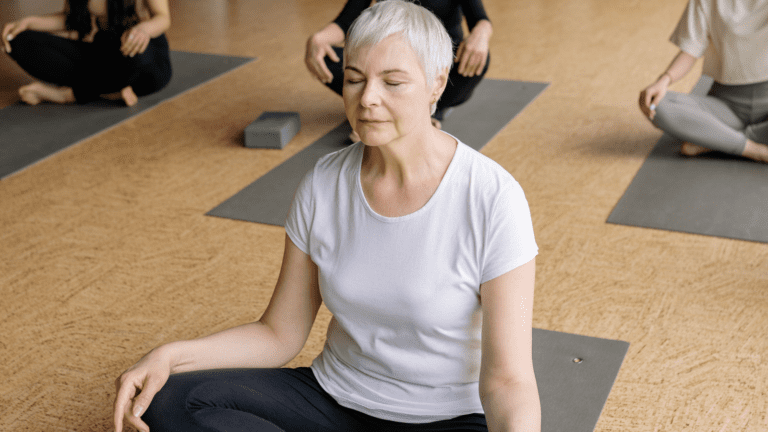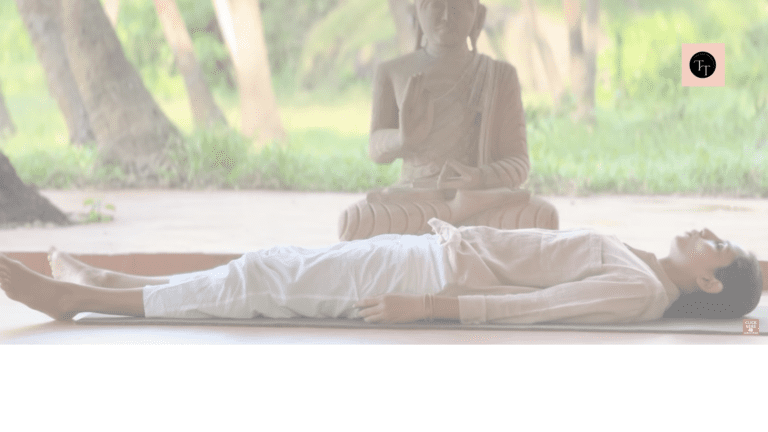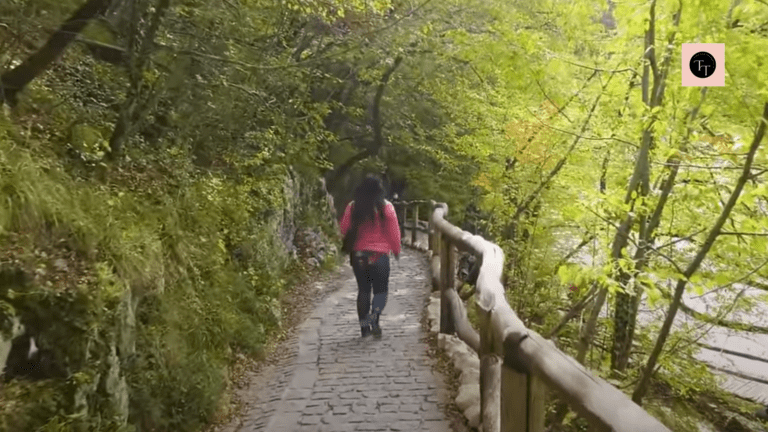How to Practice Meditation Stillness for a Blissful Life!
You’ve experienced a full life—filled with joys and challenges. But, you’ve always been on the run. Maybe, it is time for Meditation Stillness!
Meditation Stillness is a gentle way to reconnect with yourself—not by doing more, but by making your body and mind still. You have reached a stage when there’s nothing more to seek, fix, or achieve.
“Seek nothing. Just sit.” – Bodhidharma, a legendary Buddhist monk and the founder of Zen Buddhism.
In Zen practice, “shikantaza” (which translates to “just sitting”) refers to a form of meditation, where you simply sit, without any specific goal or seeking.
Instead of striving for enlightenment or any other spiritual goal, the emphasis is on being fully present in the moment, without attachment to thoughts or desires. You get a profound sense of stillness and acceptance when you have no cravings.
This article will walk you through Meditation Stillness, why it’s meaningful now, and how to begin. The beauty of this practice is that it’s not about getting it right—it’s about showing up for yourself, just as you are.
What is Meditation Stillness?
Meditation Stillness is being fully present without striving to control thoughts or aim to achieve anything. It’s not about controlling your mind but about sitting with whatever arises—thoughts, emotions, or silence—while staying connected to your breath.
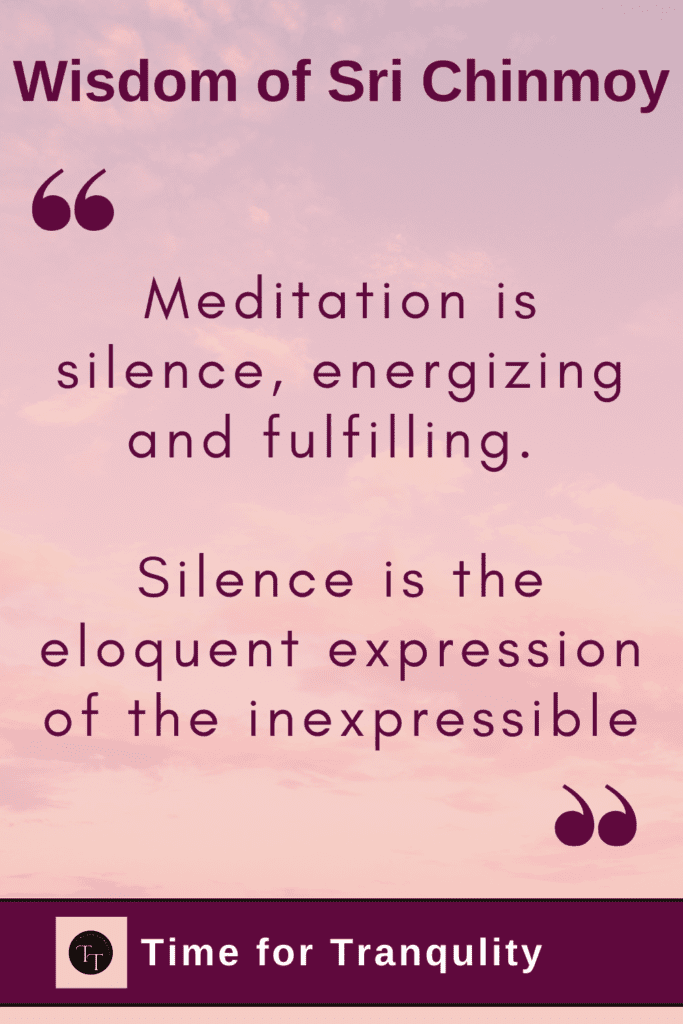
This approach reflects ancient wisdom from Zen, Buddhism, and Hindu traditions.
In Zen, Zazen encourages sitting without purpose, observing the flow of thoughts like clouds drifting through the sky. The Bhagavad Gita speaks of detachment—not withdrawing from life, but finding peace within it. Similarly, Buddhism teaches us that embracing stillness helps us recognize that life is always in motion, yet we can be calm within it.
You may have already experienced glimpses of stillness—like sipping tea quietly or listening to birds at dawn. In these moments, you weren’t “doing” anything, but simply being. Meditation Stillness is about learning to cultivate more of these moments intentionally.
It’s not complicated or out of reach. It’s a practice of presence, available anytime you pause, breathe, and allow yourself to sit without expectation.
Why Meditation Stillness is Perfect for This Stage of Life?
You may feel the weight of unanswered questions or a subtle longing for more meaning at this point in life. Meditation Stillness shows you how to make peace with these uncertainties by removing the pressure to achieve and helping you reconnect with the present moment.
- Physical Comfort: There’s no need for complicated postures—just sit on a comfortable floor cushion or in your favorite chair, lie down, or even take a slow walk. Stillness isn’t about rigid discipline but about finding ease in being with yourself.
- Emotional Healing: Life has accumulated both joys and sorrows, over the years. Sitting quietly allows emotions to surface and settle naturally without force, offering space for healing and clarity.
- Freedom from Performance: There’s no right or wrong way to do it—stillness frees you from the need to “get it right.” It’s an opportunity to let go of lifelong patterns of striving.
- Spiritual Connection: You don’t need to travel far to find peace. During my travels, I learned to experience long periods of stillness, sitting by the Ganges River or in a Zen garden in Japan. You can discover the same peace in your home or backyard. It’s about quieting the noise of “what’s next” and being present with the life unfolding right now.
Sometimes, even traditional meditation practices can put pressure on you. You may have set goals for yourself about how long you must meditate or expectations of certain results after the meditation.
But, when you practice Meditation Stillness, you “seek nothing, just sit.”
Simple Steps to Start Practicing Meditation Stillness
Starting a meditation stillness practice doesn’t require experience or elaborate rituals. It’s about finding a serene spot and time to sit quietly and connect with yourself.
Here are simple steps to help you begin:
1. Set the Stage
- Find a comfortable place where you won’t be disturbed—a cozy chair by the bedroom window or a floor cushion near the fireplace in your living room.
- You might place a candle, plant, or meaningful object nearby to help create a sense of calm.
- Practicing meditation stillness on your porch or during a nature walk can be equally soothing.
2. Go With the Flow
- Pick a time, where you know you won’t be rushed.
- Start by sitting for as long as you wish. Do not aim for long sessions right away.
- The time you spend in meditation stillness may naturally increase as you get more comfortable with the idea.
- Let this be a time to pause, breathe, and release all expectations.
3. The Practice
- Sit comfortably, with your hands resting on your lap or knees.
- Close your eyes or soften your gaze.
- Focus on the natural rhythm of your breath—you don’t need to change it, just observe it.
- As thoughts arise, let them come and go without engaging. Imagine them floating past, like leaves drifting on a stream.
- If you feel distracted, gently bring your attention back to your breath.
4. Alternative Practices
- Walking Meditation: Walk slowly, focusing on each step and each breath. Feel the ground beneath your feet and listen to the sounds around you.
- Body Scan: Close your eyes and mentally move through your body, noticing any areas of tension. With each exhale, let that tension go.
- Sound Meditation: Sit quietly and listen to natural sounds—birds, wind, or rain. Let yourself be fully present with what you hear.
5. Make It a Gentle Habit
- Tie your stillness practice to something you already do—like morning coffee or evening tea.
- Do not aim to become perfect at meditation stillness practice. What matters is consistency—just showing up each day is good enough.
With time, these quiet moments will grow into a nourishing habit, bringing more peace and presence into your life.
In Conclusion
“In the stillness of solitude, we find our true selves.” – Unknown
In the meditation stillness, even though you seek nothing, you find your true self. The noise of the world fades away and your inner essence speaks. A profound sense of peace and tranquility engulfs you.

